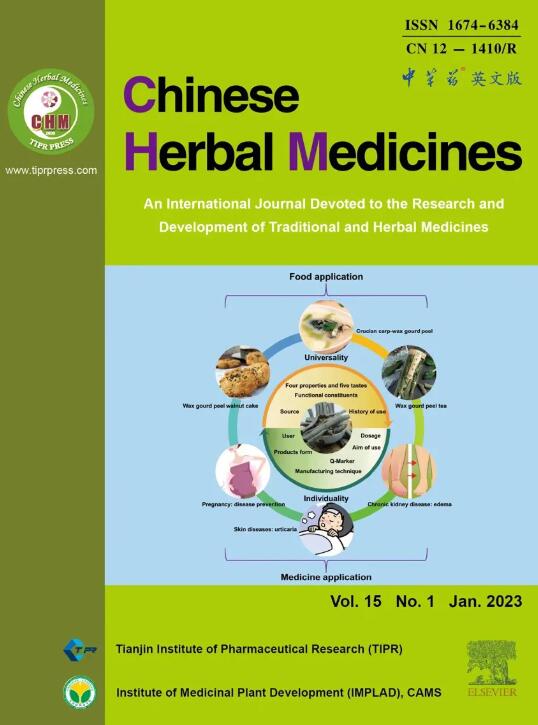Identification and functional characterization of a new flavonoid glycosyltransferase from Rheum palmatum
IF 8.9
4区 医学
Q1 CHEMISTRY, MEDICINAL
引用次数: 0
Abstract
Objective
To characterize a glycosyltransferase (RpUGT1) from Rheum palmatum and investigate its specificity toward flavonoid compounds.
Methods
The RpUGT1 was expressed in Escherichia coli and screened for catalytic activity against a range of flavonoid substrates using a high-throughput HPLC assay method. Mass spectrometry (MS) and nuclear magnetic resonance (NMR) were used to determine the structure of the product. Homology modeling, molecular docking analyses and site-directed mutagenesis studies were conducted to identify key residues responsible for its function.
Results
The recombinant RpUGT1 protein exhibited catalytic activity towards various flavonoids. Notably, RpUGT1 catalyzed the glycosylation of isorhamnetin to form 3-O-glucoside and kaempferol to form 7-O-glucoside, utilizing uridine diphosphate (UDP) glucose as the sugar donor. The homology modeling and molecular docking analyses identified key residues responsible for its activity. Subsequent site-directed mutagenesis studies highlighted the crucial role of K307 in catalysis.
Conclusion
These discoveries offer valuable perspectives on the role of the UGT family and establish a groundwork for forthcoming research on the synthesis of flavonoids in plants.
一种新的掌大黄酮糖基转移酶的鉴定与功能表征
目的研究掌大黄糖基转移酶(RpUGT1)的结构特征,并探讨其对黄酮类化合物的特异性。方法在大肠杆菌中表达RpUGT1,采用高效液相色谱法筛选其对一系列类黄酮底物的催化活性。采用质谱(MS)和核磁共振(NMR)测定产物的结构。通过同源性建模、分子对接分析和定点诱变研究来确定其功能的关键残基。结果重组RpUGT1蛋白对多种黄酮类化合物具有催化活性。值得注意的是,RpUGT1利用尿苷二磷酸(UDP)葡萄糖作为糖供体,催化异鼠李素糖基化生成3- o -葡萄糖苷,山奈酚糖基化生成7- o -葡萄糖苷。同源性建模和分子对接分析确定了其活性的关键残基。随后的定点诱变研究强调了K307在催化中的关键作用。结论这些发现为研究UGT家族的作用提供了有价值的视角,并为进一步研究植物中黄酮类化合物的合成奠定了基础。
本文章由计算机程序翻译,如有差异,请以英文原文为准。
求助全文
约1分钟内获得全文
求助全文
来源期刊

Chinese Herbal Medicines
CHEMISTRY, MEDICINAL-
CiteScore
4.40
自引率
5.30%
发文量
629
审稿时长
10 weeks
期刊介绍:
Chinese Herbal Medicines is intended to disseminate the latest developments and research progress in traditional and herbal medical sciences to researchers, practitioners, academics and administrators worldwide in the field of traditional and herbal medicines. The journal's international coverage ensures that research and progress from all regions of the world are widely included.
CHM is a core journal of Chinese science and technology. The journal entered into the ESCI database in 2017, and then was included in PMC, Scopus and other important international search systems. In 2019, CHM was successfully selected for the “China Science and Technology Journal Excellence Action Plan” project, which has markedly improved its international influence and industry popularity. CHM obtained the first impact factor of 3.8 in Journal Citation Reports (JCR) in 2023.
 求助内容:
求助内容: 应助结果提醒方式:
应助结果提醒方式:


